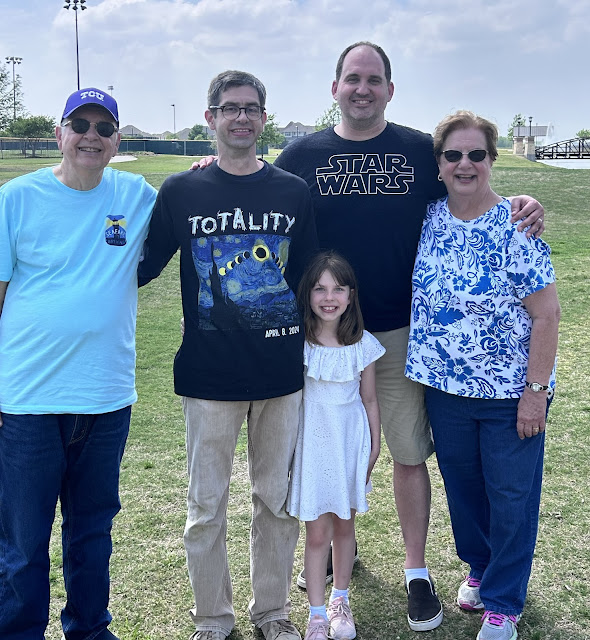Totality: it's getting dark!
This post covers the darkness of a total solar eclipse, and why it's so special.
I've read some comments online (and heard some from people I know) that state things like "I can watch it get dark at night!"
At a total solar eclipse, it's not just that it gets dark. It's the WAY it gets dark.
People are often surprised how much the sun is covered before any change in light is noticed. At that point, the change is so subtle that you wonder if your eyes are fooling you. The sun is significantly covered when the changes in light are noticeable.
But even when 99% of the sun is covered, it's not very dark. The glare is basically gone by this point - you don't have to squint when looking at the landscape- but the brightness is still there. In that final 60 seconds or so, the light level drops VERY rapidly. There is nothing else in nature like it!
The very best way to convey this is through video.
Please take a look at my video of the 2017 eclipse:
https://www.youtube.com/watch?v=f-WAQyVdflY
The eclipse part begins at 3:08 if you'd like to skip ahead.
The next 2 minutes of the video is a summary of short video clips and still images, which show the progress of the partial eclipse (which took about an hour and a half).
The portion of the video starting about 5:05 is where the real action begins. At this point, the sun was about 98% covered. Over the next 1 minute and 45 seconds, watch how the light level changes. That's in real time!
Here are some pictures showing the difference between 99% and totality:
I can speak from experience: it is such a WEIRD and AMAZING experience to watch the world around you darken that fast!
I will mention that it does NOT get as dark as night. It's more like a deep twilight, but it should be dark enough to see a few stars and planets. There's also a 360 degree sunset! More on these in a later post.
(Also watch how quickly the world brightens after totality!)
The author James Fenimore Cooper wrote about the total solar eclipse he witnessed in 1806. He describes the light returning at the end of totality: "But, appalling as the withdrawal of light had been, most glorious, most sublime, was its restoration! The corona of light above the moon became suddenly brighter, the heavens beyond were illuminated, the stars retired, and light began to play along the ridges of the distant mountains. And then a flood of grateful, cheering, consoling brightness fell into the valley, with a sweetness and a power inconceivable to the mind, unless the eye has actually beheld it. I can liken this sudden, joyous return of light, after the eclipse, to nothing of the kind that is familiarly known."
You are welcome to read my report of the 2017 total eclipse at
https://eclipseaugust2017.blogspot.com/2018/08/total-solar-eclipse-experience-eastern.html
(I did not witness the 1806 eclipse.)😀
Thanks for checking this out!



Comments
Post a Comment